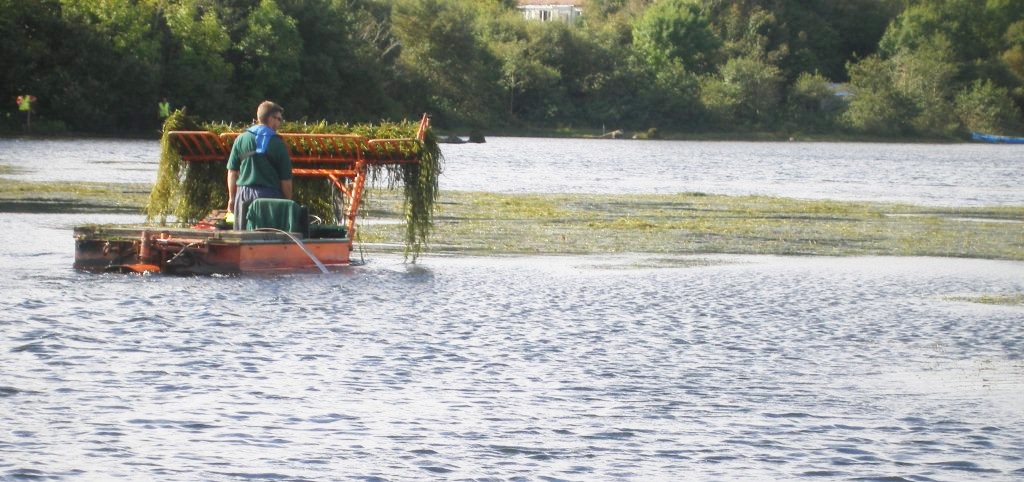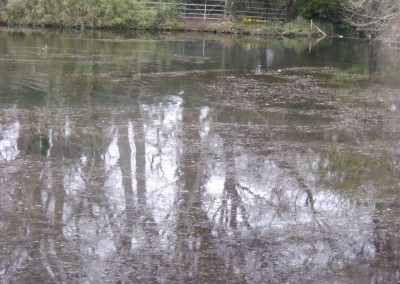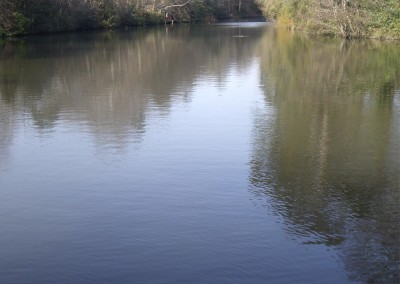Aquatic Weeds
are plants that have adapted to living in aquatic environments (saltwater or freshwater)Invasive Plants
Aquatic Weeds
Water or in soil that is permanently saturated with water
What are Aquatic Weeds?
Aquatic weeds are plants that have adapted to living in aquatic environments (saltwater or freshwater).
These plants require special adaptations for living submerged in water, or at the water’s surface.
The principal factor controlling the distribution of aquatic plants is the depth and duration of flooding. However, other factors may also control their distribution, abundance, and growth form, including nutrients, disturbance from waves, grazing, and salinity.
Problems with Aquatic Weed Management
Aquatic weed management in natural or artificial watercourses has become increasingly difficult in recent years with the withdrawal by the EU of permission to treat offending weed species with previously approved aquatic herbicides. Currently, approval remains for the use of a few herbicidal products in or near waters. While no conservation-minded water manager wishes to use herbicides in an excessive or indiscriminate manner, some of the products that were on the market until 2009 proved most useful for localised weed control.
This European-wide action to ban the use of effective herbicides has adversely affected water managers and has resulted in the proliferation of troublesome invasive and non-invasive aquatic plant species.
Excessively weeded watercourses are unsightly, commonly malodorous and rarely can serve the function for which they were intended. In rivers and streams, excessive vegetation blocks the natural flow and can present flooding problems. It can also impede angling and navigation, whether for paddle craft or larger boats. In shallow lake and pond habitats, whether natural or man-made, dense weed beds can prevent amenity use and can result in deoxygenation of the water, which can kill fish.
Blocks natural flow of rivers and streams
Can cause flooding problems
Can impede angling and navigation
Can prevent amenity use in lakes and ponds
Can result in deoxgenation of water which can kill fish
Classification of different types of weeds

Solution for Aquatic Weeds
INVAS Biosecurity staff have investigated the widest range of weed control measures that are available worldwide and are in a position to offer a variety of solutions that will restore the natural function and aesthetic appeal of your waterway. Included among these are:
- Herbicidal treatment for emerged or floating weeds.
- Mechanical cutting and harvesting for emerged, floating leaves and submerged weeds, and algae.
- Dredging to provide sufficient water depth to preclude weed growth or to open up excessively weeded areas of water body.
- Materials to block light from entering the water, including inert dyes, black plastic or natural jute sheets.

INVAS Biosecurity realises that each aquatic situation is different and requires its own unique and specifically tailored control program. INVAS Biosecurity staff have the experience and expertise to identify the issues and to recommend and implement the control program best suited to your situation.
In addition to any weed control service offered, INVAS Biosecurity staff will examine the watercourse and adjacent area with a view to determining the cause of the weed overgrowth.
While dealing with the problem on hand using one of the measures listed above, as appropriate, INVAS Biosecurity will issue a report on the likely cause(s) of the problem (e.g. nutrient enrichment) and identify potential long-term solutions.
Speak to our Aquatic Weed Specialists today
INVAS Biosecurity offers you an assessment and analysis of your plant invasion problem. Give us a call now and we will recommend measures that will provide a long-term resolution to your aquatic weed problems.




